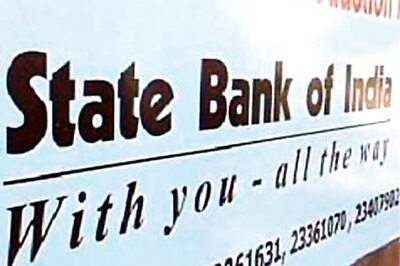
views
Union external affairs minister S Jaishankar and his Russian counterpart Sergey Lavrov on Wednesday discussed the International North-South Transport Corridor (INSTC) – the freight project linking India and Russia via several central and west Asian countries – and told reporters that it will be implemented in the near future.
“This project was met with much enthusiasm in all nations, on which its implementation depends. And it will certainly be implemented in the near future,” Lavrov said, according to Russia Today.
Lavrov, who was addressing a joint press conference in Moscow, said the corridor will develop because of a decline in ‘Western economic clout’ which will result in emerging economic powers developing new trade infrastructure to meet their needs.
Jaishankar said the corridor will not just benefit India and Russia but also help in the transport and development of countries that the corridor will pass through as well as the global economy.
“I think it is in the interest of the global economy that this corridor progresses. We will certainly give it the highest priority,” he said.
What Is The INSTC
The INSTC is a 7,200-km-long multi-mode network of ship, rail, and road route and will connect India and Russia while connecting Iran, Afghanistan, Azerbaijan, Central Asian nations and Europe.
India, Iran, Russia, Azerbaijan, Kazakhstan, Armenia, Belarus, Tajikistan, Kyrgyzstan, Oman, Syria, Turkey, Ukraine, and Bulgaria are the current members with Bulgaria being an observer member. Turkmenistan is on its way to become a formal member of the group as PM Modi extended an invitation to the central Asian nation during his 2015 visit to Ashgabat.
Why Is It Important – for India, Russia and The Global Economy
The INSTC corridor is rooted in history as it follows a route that was used by Indian traders dating back to the Safavid dynasty rule (1501 to 1736 AD). Around 10,000 traders from mediaeval India used this route for trading purposes.
For modern-day India, the INSTC and its proper implementation is necessary to cement its role as a major global player while strengthening its major regional player image. It is an apt challenge to China’s Belt and Road (BRI) projects because it does not lure nations into debt traps through infrastructure projects but focuses on collaboration to build infrastructure for collective growth.
The Federation of Freight Forwarders’ Associations in India also said that the INSTC is 30% cheaper and 40% shorter than the current traditional route and if the route is built bilateral trade volumes between India-Russia, India-Iran and between INSTC member nations will increase.
India will also no longer have to use expensive and time-consuming Rotterdam port or land route via China to reach Russia and Central Asia and Indian exports could reach these nations in shorter time.
For Russia and Central Asian countries, the INSTC allows them to enter the fastest-growing economy of the world and one of the world’s largest consumer bases.
Routes
The route joins Mumbai to Moscow and St Petersburg via Bandar Abbas, Bandar-e-Anzali and Astrakhan, while covering important seaport cities in the Arabian Sea, Mediterranean Sea, North Sea and the Black Sea. This is the primary INSTC route but there are other routes which are also being considered for inclusion into the INSTC.
India-Iran-Azerbaijan-Russia-Kazakhstan can be connected if the Azerbaijan Route is made part of the INSTC. The Chabahar NSTC Integration with INSTC will see Chabahar Port in Iran turn into a full deep sea port. Kazakhstan – Turkmenistan – Iran connected Kazakhstan to the Persian Gulf will also see INSTC accommodate another proposed route, thus connecting Turkmenistan. The Southern Armenia Railway aims to establish the most direct transportation link connecting Black Sea ports to Persian Gulf ports and its inclusion in the INSTC will complement it further as Armenia and Iran will find themselves closer.
(with inputs from Indian Express, Daily Shipping Times and agencies)



















Comments
0 comment